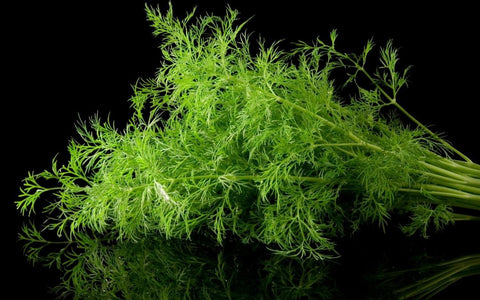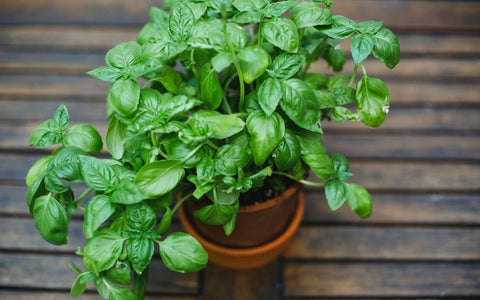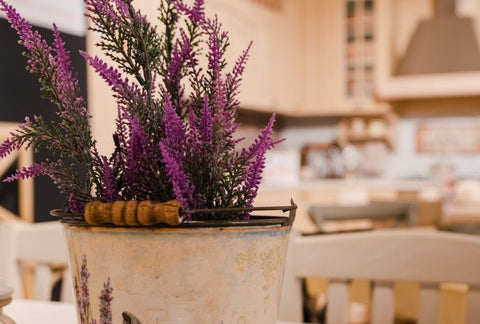Dill is derived from the Norse word ‘dilla’, meaning ‘to lull’, and has been used medicinally since the Middle Ages to treat digestive problems and diseases. Chill with dill! In this blog, we’ll cover everything related to growing dill outdoors, including basic facts, supplies, setup, and steps to grow, care for, and harvest it.
| Plant type | Annual |
| Family | Apiaceae |
| Binomial name | Anethum graveolens |
|
Timing Dill sprouts in 2-3 weeks. Harvest from Month 3+. Part sun Dill requires 5+ hours of direct sun [DLI of 15+ mol/m²/day]. Care Growing dill outdoors is beginner-friendly but involves more steps than indoors. You’ll sprout, thin, prune, harvest, and manage pests and problems occasionally. |
TABLE OF CONTENTS
Ways to Grow Dill | Care and Maintenance for Dill | Timeline & Steps
Ways to Grow Dill Outdoors
Dill plants don’t thrive in moist soil conditions. The roots are not accustomed to being too wet and will rot in boggy conditions. If the soil dries out completely, the roots will die back, and the plant won’t recover. This can catch you off guard because the plant’s not very expressive (its leaves don’t wilt) so it will look fine right up until it dies.
You have two options when growing dill outdoors:
- Plant directly onto soil
- Use a container with drainage
If you prefer planting directly onto soil, you can use potting mixes from stores or online, or create your own. Learn how to create your own potting mix. Herbs like dill thrive in nutrient-dense soils, so consider incorporating plant foods or fertilizers.
We prefer using containers as we have more control over herb growth. Containers should have good drainage as dill thrives well in this environment. Learn more about the right pot size.
| Pros | Cons | |
|---|---|---|
| Soil (in ground) |
|
|
| Container |
|
|
Other Ways to Grow Dill Outdoors
Use ollas (plant watering spikes/globes) for containers to help with drainage. Raised beds are also a good choice for growing dill outdoors.
Best Gardening Zones for Growing Dill Outdoors
Dill is most recommended for zone 5a regions, but it can also grow well in zones 2-11. Dill is cold-hardy and can tolerate colder temperatures. Learn how to grow dill indoors if you prefer.
Care and Maintenance of Dill Outdoors
Light Requirements for Growing Dill Outdoors
Dill needs lots of light to grow and develop good flavor. Ensure it gets at least 5+ hours of direct sunshine daily in an unobstructed location.
Right Temperature for Your Outdoor Dill
Dill Plants Grow Faster in Warmer Temps
Dill plants are warm-weather crops and will grow faster in warmer temperatures. Ideal temperatures are around 70°F but anything between 60 and 90°F works well.
Water and Humidity
Dill thrives on adequate moisture but can suffer if waterlogged. Water just enough, especially if using soil. Use pots with drainage or ollas to help with drainage.
Nutrients and Fertilizers
Dill likes nutrients that are equal parts nitrogen, phosphorus, and potassium (NPK 10-10-10). We recommend Dr Earth All Purpose. For ongoing growth, use plant food high in nitrogen (NPK 10-5-5). We recommend Joyful Dirt All Purpose.
When to Move Your Dill Plant Indoors
Dill is both warm and cold-hardy. Move indoors only when the temperature drops below 25°F. Learn more about growing dill indoors.
Common Problems with Growing Dill Plants Outdoors
Pests
Common pests include aphids, cutworms, and armyworms. Learn more about managing pest problems.
Diseases
Dill can be affected by diseases like CMD, leaf blight, damping-off, and mildew. Learn more about these diseases.
Timeline and Steps on How to Grow Dill Outdoors
Best Setup for Dill Plants
Below is the best setup for growing dill plants outdoors. You’ll need:
Best Planter for Dill:
Ceramic Self Watering Planter (preferred) or a pot that is at least 6". Raised beds and ollas are also great choices.
Soil:
Free Draining Mix
Plant Food:
At the start: Balanced Blend. This should be equal parts nitrogen, phosphorus, and potassium (with NPK numbers like 10-10-10).
Ongoing: Herb Blend. This should be high in nitrogen (with NPK numbers like 10-5-5).
Starting your Dill: Seed vs Cutting vs Nursery Plant
New Dill plants can be started from seed, propagated from an established plant, or purchased live at many garden centers. We prefer to sprout from seed or propagate from a stem cutting, as it results in plants that are adapted to your growing conditions and limit the chances that you accidentally bring home pests.
How to Plant Dill Seeds Outdoors

Dill grows quickly from seed. Plant 3 sites in a 4" / 1-pint container. In larger containers, space sites 3" apart. For each site plant 2 seeds 1/4 inches deep. Keep the soil warm (60-70°F, ideally 65°F). Sprouts typically appear in 14 days but can be as quick as 10 days or as long as 21 days depending on your conditions.
How to Transplant Dill

Live starter plants give you a big jump start on your first harvest. When you’re in a garden center, pick the bushiest plant available (tall and lanky ones will be weak growers) and inspect for pests. Leaves should be dark green without holes, spots, or curled edges. Quarantine your plant for about a week after bringing it home to ensure it's pest-free.
- Remove some soil from the final planter, leaving enough space for the bottom of the seedling to be just higher than the soil surface.
- Hold the base of the stem with one hand, and turn the pot over while gently pulling the seedling. Squeezing the pot can help dislodge it.
- Place it in its final container and fill around it with soil so that it’s tight but not compacted.
Week 2-3: Check for Dill Sprouts
You could see seedlings in as little as 10 days (though 14 days is more typical). If it’s been 21 days and you still don’t have any sprouts, it’s likely that your setup is too cold.
Week 3: Thin Your Dill Seedlings

Thin your planter to only have 1 seedling per site, leaving the largest plant. If you are using the recommended planter (at least 4" / 1 pint), this will mean you’ve got 3 plants after thinning. By getting rid of the smaller seedlings, you allow the biggest and strongest one to flourish by reducing competition for water, food, and space. If your seedlings are under 1 inch, stretching out, or folding over, they likely don't have enough light.
Week 8: How to Prune Dill Plants

You’ll notice how all the stems and leaves of Dill grow from a single, central point (called radial growth). The plant puts out new leaves in the center and pushes old leaves outward, getting bigger and bushier over time. Pruning and harvesting are one-in-the-same with Dill. Once the plant has at least 3 separate stems coming from the base, take one of the outside leaves and cut it close to the base (½” above is fine). It’s good to leave at least 2/3rds of the plant left to regrow. If you only want a tiny amount of herbs, you can clip the top of an individual stem – just be sure to leave some leaves on that stem; otherwise, it won’t grow back.
Month 3+: How to Harvest Dill
Cut the stem clear to the base - only cutting what you can use fresh. Each time you cut, new stems will come in to replace them - kind of like mowing the lawn.
How to Use Your Freshly-Harvested Dill in Cooking
Dill’s feathery herbs are commonly used to spice up many types of dishes. They can be used in many ways, such as:
- Added as a garnish to soups
- Spicing up your pickles
- Toppings or added flavoring for bread and other dishes
Check out some more of our favorite dill recipes here.
How to Preserve Dill
There are several ways to preserve or keep your herbs fresh. Here are some of the easiest and most recommended methods:
- Lazy person technique: Keep the fresh herbs in their original packaging and store them in the fridge.
- Storing herbs in a glass of water inside the fridge: Cut the end of the stem, fill a glass jar or cup with water, and place your herb inside. Almost like a vase or bouquet of herbs!
- Keep in a glass of water under natural lighting.
- Wrap loosely in a damp paper towel.
- Freeze them: You can freeze fresh herbs like dill to use later. All you need are some ice cube trays and a freezer.
Learn more about how to preserve and keep your herbs and dill fresh here.
Month 6+: End of Life
Once your dill plant is mature, it’ll decide it’s time to make seeds & die off. Delay this by clipping flower stalks as soon as you see them. It’s best to catch them as early as possible.
If you’d like to learn about the dozens of other herbs, fruits, and vegetables that you can grow outdoors, grab a copy of our free eBook below.
We hope this blog has given you everything you need to know about growing dill outdoors. If you have any questions, just leave a comment below.









Very informative article. Well written. Easy to follow with plenty of pictures. Thank you.